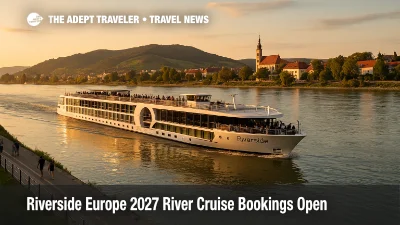Transylvania, Romania

Travel to Transylvania, Romania, and discover an enchanting region teeming with a rich tapestry of history, mystery, and natural beauty. Nestled in the heart of Romania, Transylvania's rolling hills and Carpathian Mountains offer some of the most breathtaking landscapes in Europe, perfect for outdoor enthusiasts and photographers alike. When you travel to Transylvania, you'll find yourself immersed in medieval towns that look like they’ve jumped straight out of a fairy tale, complete with cobblestone streets, historic castles, and vibrant local markets. One of the most iconic sights is Bran Castle, often referred to as Dracula's Castle, where the lore of Vlad the Impaler still captivates visitors. But Transylvania, Romania, is more than just myths and legends; it's a cultural mosaic where traditional Romanian, Hungarian, and German influences converge, reflected in the region's unique architecture, cuisine, and festivals. Whether you're sipping locally made wine in the historic city of Sibiu, exploring the fortified churches of Biertan and Viscri, or wandering through the lively streets of Cluj-Napoca, the soul of Transylvania endures in its warm hospitality and everlasting charm. For nature lovers, the Apuseni Mountains and Retezat National Park provide endless opportunities for hiking, caving, and even spotting elusive wildlife like bears and lynxes. Travel to Transylvania, Romania, and experience a destination that's truly off the beaten path, where every turn reveals a new story and every horizon promises an unforgettable adventure.
The History of Transylvania, Romania
Have you ever wanted to step into a world that blends myth and history, where medieval castles stand sentinel against stunning mountain landscapes? Travel to Transylvania, where lush forests, charming towns, and incredible historical sites await your discovery. Often overshadowed by its legendary association with Dracula, Transylvanian history is a captivating tapestry of cultures, conflicts, and transformations spanning centuries. Transylvania, Romania offers more than just myths; it’s a region brimming with authentic experiences and historical narratives that any avid traveler would relish exploring.
The Rich Tapestry of Cultures
The history of Transylvania is deeply interwoven with a diverse array of cultures. Initially inhabited by the Dacians, an ancient people whose roots can be traced back to the Bronze Age, Transylvania was subsequently conquered by the Romans, who left behind impressive ruins. Over the centuries, this region saw an influx of Saxons, Hungarians, and Szeklers, each leaving indelible marks on the cultural and architectural landscape. Traveling to Transylvania isn't just a trip; it’s an educational journey through a multicultural past that shapes its unique identity today.
Medieval Marvels and Fortresses
Travel to Transylvania to witness its extraordinary medieval architecture. The region is home to fortified churches and castles that have withstood the test of time. Bran Castle, famously linked to the Dracula legend, is one of Transylvania's most iconic landmarks. However, it’s worth venturing beyond the myth to explore the fortified Saxon churches in the towns of Biertan and Viscri, as well as the gorgeous Corvin Castle in Hunedoara. Each structure tells a story of the medieval period, detailing the defensive needs, artistic tastes, and community livelihoods of that era. These historical sites offer a tangible link to Transylvania, Romania's rich and varied past.
A Renaissance and Baroque Splendor
Travel to Transylvania, Romania to discover its splendid Renaissance and Baroque architecture. During the Renaissance, the region flourished under the realm of the Habsburg Monarchy, which brought with it new architectural styles and cultural influences. Sibiu, once the capital of Transylvania, boasts a well-preserved historical center with grand squares and colorful facades epitomizing Renaissance and Baroque elegance. Walk the cobblestone streets of Cluj-Napoca and visit its beautiful cathedrals and museums to delve deeper into this golden era. It’s a chance to see how Transylvania evolved during significant European cultural transitions.
Modern History and Waking Legends
The modern history of Transylvania is equally compelling. Travel to Transylvania, Romania, to gain insights into its pivotal role in the Austro-Hungarian Empire strategically further modified when it became part of Romania after World War I. The 20th century brought significant changes, including periods of political upheaval and rebirth, which have shaped contemporary Transylvanian society. Today, the region balances modernity with tradition, making it an enticing travel destination for those interested in understanding the dynamics of a historically rich yet ever-evolving community.
Choose to travel to Transylvania for an unforgettable journey through time. This region of Romania offers history enthusiasts, culture explorers, and curious travelers an unparalleled glimpse into a world where every stone has a story and every village a vibrant past. Whether it’s wandering the ancient fortresses, appreciating the Baroque flourishes, or experiencing the legacy of its diverse inhabitants, Transylvania promises a travel experience wrapped in the pageantry of its historical significance.
The Culture of Transylvania, Romania
Transylvania, Romania is often cloaked in a mystique that spans centuries, largely due to its association with Bram Stoker’s legendary vampire, Dracula. However, the true allure of this region extends far beyond its fictional fangs. When you travel to Transylvania, you immerse yourself in a culture steeped in historical richness and contemporary vibrance. The region is a mosaic of medieval towns, ancient fortresses, beautiful landscapes, and a diverse range of ethnic communities, each contributing to an intricate cultural tapestry. Whether you're a history aficionado, a nature lover, or a culinary enthusiast, a trip to Transylvania will offer you an unforgettable experience.
Transylvania, Romania, is a region where time seems to stand still amidst picturesque rural landscapes and ancient architecture. In Transylvania, you can explore an abundance of well-preserved medieval towns such as Sibiu, Brasov, and Sighisoara, each telling their own unique stories through cobbled streets and Gothic spires. These towns are not merely relics of the past; they are vibrant cultural hubs with a dynamic array of events, from jazz festivals to medieval reenactments. The harmonization of old and new makes travel to Transylvania a truly unique spiritual and cultural journey.
Rich Folklore and Traditions
When you travel to Transylvania, you also delve into a land rich with folklore and living traditions. The Saxon fortified churches, Maramure? wooden churches, and the rich Hungarian influence mark the cultural diversity of the region. Visitors can experience age-old customs that have been meticulously preserved, from traditional weddings to seasonal festivals like the annual Sighisoara Medieval Festival. The craftspeople of Transylvania, Romania, continue to breathe life into their art through wood carving, pottery, and weaving, allowing visitors to take home a piece of this vibrant culture.
Culinary Delights
One cannot travel to Transylvania, Romania, without indulging in its culinary delights. The cuisine here is a delectable blend of Romanian, Hungarian, and Saxon influences, offering dishes that are both hearty and flavorful. Traditional foods such as sarmale (cabbage rolls), ciorb? (sour soup), and m?m?lig? (polenta) are must-tries. Pair these with local wines from the Transylvanian hills, and you have a feast that delights the senses. Markets and farm-to-table restaurants provide an exceptional culinary experience, giving you a taste of both the region’s agricultural bounty and its culinary expertise.
Beyond its mesmerizing castles and mythical tales, Transylvania, Romania, stands out as a cultural treasure. It offers travelers an immersive experience through its captivating traditions, historical depth, and dynamic present. Traveling through this region means experiencing the blend of different cultures that have coexisted here for centuries, which continues to make Transylvania a richly rewarding destination to explore. So, pack your bags and prepare yourself to travel to Transylvania—it’s a journey that promises to be as enriching as it is enchanting.
The Food of Transylvania, Romania
When you travel to Transylvania, Romania, you're embarking on a culinary adventure that intertwines history, culture, and a medley of flavors unlike any other. The gastronomic landscape of Transylvania is a testament to the region's diverse heritage, blending Romanian, Hungarian, German, and even Turkish influences. Immersing yourself in the culinary delights of Transylvania, you'll discover a rich tapestry of traditional meals prepared with love, utilizing fresh, locally-sourced ingredients that bring every dish to life.
Traditional Dishes and Local Ingredients
One standout aspect of the culinary experience in Transylvania is the emphasis on traditional dishes that have been passed down through generations. These time-honored recipes often feature hearty ingredients like cabbage, potatoes, and various meats, reflecting the rural roots of the region. Savoring a bowl of "ciorb? de burt?" (tripe soup) or "m?m?lig?" (a cornmeal dish similar to polenta) will transport your taste buds through centuries of culinary tradition. With each bite, you'll understand why these dishes have stood the test of time and remain beloved staples among locals.
Diverse Gastronomic Influences
Transylvania's unique position in Eastern Europe means you're not just limited to Romanian cuisine. The region also boasts significant Hungarian, German, and even Ottoman influences that shape the culinary landscape. Indulge in "paprika?" (a Hungarian paprika stew), quench your thirst with a pint of German-style beer, or delight in a "kürt?skalács" (chimney cake) baked to perfection over an open flame. Traveling to Transylvania, Romania, becomes a culinary journey across borders, where each meal tells a story of cultural integration and historical transition.
Farm-to-Table Freshness
Another key highlight when you travel to Transylvania is the profound commitment to fresh, farm-to-table ingredients. The region's agrarian economy ensures a steady supply of local produce, dairy, and meats, all brimming with natural flavors. Picture a bustling local market, brimming with vibrant fruits and vegetables, aromatic herbs, and homemade cheeses, all waiting to be transformed into delectable dishes. Dining in Transylvania often means eating seasonally and sustainably, where every meal offers a taste of the land itself.
Warm Hospitality and Unique Dining Settings
No culinary experience in Transylvania would be complete without mentioning the warm hospitality you'll encounter. Whether enjoying a meal at a rustic countryside inn or a modern urban eatery, you'll be welcomed with open arms and treated like family. The unique dining settings, ranging from medieval-themed restaurants in the shadow of ancient castles to quaint, family-run establishments in picturesque villages, only add to the charm. Travel to Transylvania, Romania, not just to eat, but to create memories around the communal act of sharing a meal, surrounded by breathtaking landscapes and historical intrigue.
What to See and Do in Transylvania, Romania
Embarking on a journey to Transylvania, Romania is an adventure filled with history, natural beauty, and cultural richness. To make the most out of your travel to Transylvania, here are ten must-do activities that will offer you an unforgettable experience.
Explore Bran Castle
One of the most iconic landmarks in Transylvania, Romania is Bran Castle, also known as "Dracula's Castle". Located in Bran, Romania, this medieval fortress is steeped in history and legend. Take a guided tour through the castle's many rooms, including eerie passageways and secret staircases, while learning about the story of Vlad the Impaler, the inspiration behind Bram Stoker's Dracula.
Discover the Black Church in Bra?ov
Situated in Bra?ov, Romania, the Black Church is a must-see for its stunning Gothic architecture. This towering edifice, built in the 14th century, is the largest Gothic church in Transylvania and houses an impressive collection of Oriental carpets. Don't miss the chance to hear its 4,000-pipe organ during a special concert.
Wander Through the Old Town of Sighi?oara
Travel to Transylvania, Romania isn't complete without visiting Sighi?oara, the birthplace of Vlad the Impaler. This charming town features a well-preserved medieval citadel. Stroll through cobblestone streets, marvel at the Clock Tower, and climb the Scholar's Stairs for a panoramic view of the city and surrounding countryside.
Trek Through the Carpathian Mountains
The Carpathian Mountains are a natural highlight of Transylvania. Whether you're an experienced hiker or a casual walker, there are trails for all skill levels. The Piatra Craiului National Park offers stunning limestone ridges, rich biodiversity, and traditional shepherd villages where you can experience the rural lifestyle first-hand.
Visit Sibiu's Historic Center
Sibiu, Romania was once a European Capital of Culture, and its historical center perfectly justifies that accolade. Explore Pia?a Mare and Pia?a Mic?, where medieval buildings, gothic churches, and Baroque palaces converge. Don't miss the Brukenthal National Museum for a taste of local and European art.
Tour the Painted Monasteries of Northern Transylvania
The painted monasteries of Northern Transylvania are UNESCO World Heritage Sites that reflect centuries-old traditions and masterful artistry. Particularly notable are the Voronet Monastery, often referred to as the "Sistine Chapel of the East," and the Moldovita Monastery. Their exterior frescoes depict biblical scenes and hints of local folklore.
Experience Rural Life in Viscri
Viscri, Romania is a tranquil village where time seems to have stopped. Prince Charles has a residence here, signaling its importance. Visit the fortified church, a UNESCO site, and engage with local artisans to learn about traditional crafts such as blacksmithing and weaving. This offers an intimate glimpse into the rural life of Transylvania.
Attend the Medieval Festival in Sibiu
If your travel to Transylvania coincides with the summer, make sure to attend the Medieval Festival in Sibiu, Romania. This event features knights in armor, traditional music, and a variety of performances. The old town of Sibiu transforms into a medieval fairground, offering an immersive historical experience.
Explore the Turda Salt Mine
Turda Salt Mine in Turda, Romania provides a unique subterranean adventure. Walk through vast underground tunnels and chambers, and marvel at the mine's beautiful lighting effects. The highlight is the subterranean lake where visitors can take a boat ride. There are also health benefits associated with the microclimate within the mine.
Attend a Folk Festival in Maramure?
Travel to Transylvania, Romania, and experience its rich cultural tapestry by attending a folk festival in Maramure?. These festivals showcase traditional music, dances, and costumes. Villages like Sighetu Marma?iei host events where you can delve into the spirited traditions of the region, featuring wooden churches and gates that are distinctive to Maramure?.
By immersing yourself in these activities, your travel to Transylvania, Romania will be filled with memorable experiences, offering a deeper understanding of the heritage and beauty of this fascinating region.
Why You Should Travel to Transylvania, Romania
Travelers are increasingly enchanted by the mysterious allure of Transylvania, Romania. This region offers a captivating blend of natural beauty, historical richness, and cultural diversity that leaves a lasting impact on all who visit. The Carpathian Mountains, with their untouched peaks and verdant valleys, offer endless opportunities for trekking, wildlife spotting, and simply soaking in the breathtaking vistas. Whether exploring the ancient forests where legends and folklore abound or relaxing in the quaint villages that dot the countryside, the natural environment provides a mesmerizing backdrop that travelers cherish. The region’s diverse ecosystems also make it a haven for biodiversity, attracting nature enthusiasts and conservationists alike.
Aside from its natural splendor, Transylvania is a treasure trove of historical and architectural marvels. The region is home to numerous medieval castles, fortified churches, and charming old towns, each with its own unique story to tell. The iconic Bran Castle, often associated with the Dracula legend, draws countless visitors eager to delve into its gothic lore. Meanwhile, the well-preserved medieval city of Sibiu and the UNESCO-listed fortified churches like those in Biertan and Viscri provide fascinating glimpses into Romania's past. These architectural wonders are not just static relics, but vibrant places where local traditions and crafts are still very much alive. Walking through these historical sites, travelers feel as though they have stepped back in time, making their journey both educational and captivating.
The cultural richness of Transylvania, Romania, is another compelling reason why travelers repeatedly choose to travel to Transylvania. The region's cultural tapestry is woven from a mix of Romanian, Hungarian, Saxon, and Roma influences, creating a unique blend of customs, cuisines, and festivals. Travelers can sample traditional Romanian dishes such as m?m?lig? and sarmale, attend lively folk festivals, and even participate in local traditions. The warm hospitality of the local people further enhances the travel experience, making visitors feel welcomed and at home. This vibrant cultural mix is not only evident in the everyday life of the locals but is celebrated through various events and museums that preserve and honor Transylvania's diverse heritage.
Reasons to Travel to Transylvania, Romania
Your journey to Transylvania, Romania, promises to be an unforgettable adventure filled with natural beauty, historical depth, and cultural immersion. The region's stunning landscapes will captivate your senses, offering a serene escape from the hustle and bustle of daily life. The rich history and stunning architecture will inspire awe and wonder at every turn, allowing you to walk through centuries-old practices and places. Finally, the cultural diversity and vibrant local traditions will provide an enriching and immersive experience, making your travel to Transylvania not just a trip, but a journey of discovery and connection. So, pack your bags and prepare to embark on an extraordinary adventure in Transylvania, Romania!
Tips & Tricks for Traveling in Transylvania, Romania
Travel to Transylvania unveils a rich tapestry of medieval castles, dramatic landscapes, and vibrant folklore. When planning your travel to Transylvania, Romania, keep these tips and tricks in mind to enhance your experience.
1. Plan Your Visit Around Festivals
One of the best ways to immerse yourself in the culture of Transylvania is by timing your visit to coincide with local festivals. The Sighisoara Medieval Festival, for instance, offers a vibrant display of historical reenactments, crafts, and music in one of Transylvania's most picturesque towns. This can make your travel to Transylvania, Romania incredibly memorable.
2. Visit Bran Castle Early
When you travel to Transylvania, make sure to visit Bran Castle, also known as Dracula's Castle. The best time to avoid crowds is to arrive early in the morning. This way, you get to enjoy the stunning architecture and exhibits without jostling through hordes of tourists.
3. Explore the Transfagarasan Highway
Dubbed one of the most scenic drives in the world, the Transfagarasan Highway is a must-visit when traveling to Transylvania. This winding road through the Carpathian Mountains offers breathtaking views and makes for an unforgettable road trip. Summer is the best time for this drive as the road is often closed in winter due to snow.
4. Stay in a Traditional Guesthouse
To truly experience Transylvania, consider staying in a traditional Romanian guesthouse. Many of these are scattered across quaint villages and provide a genuine glimpse into Transylvanian life. These accommodations often offer home-cooked meals made from locally sourced ingredients, thereby enriching your travel to Transylvania.
5. Go Beyond Dracula
While Bran Castle is a significant draw, don't let it overshadow other remarkable attractions in Transylvania. Râ?nov Fortress, Corvin Castle, and the fortified churches of Prejmer and Viscri are just a few of the many historical sites that deserve your attention.
6. Utilize Local Guides
Hiring a local guide can vastly improve your travel experience in Transylvania, Romania. Guides can provide invaluable insights and local stories that you won't find in guidebooks. This local perspective can make your journey more enlightening and engaging.
7. Try Local Cuisine
No travel to Transylvania is complete without indulging in its local cuisine. Savor dishes like “sarmale” (cabbage rolls), “mici” (grilled minced meat rolls), and “mamaliga” (polenta). Many restaurants also serve game meat specialties, reflecting the region’s hunting traditions.
8. Walk the Old Towns
When you travel to Transylvania, Romania, take the time to wander through its many well-preserved old towns. Sibiu, Cluj-Napoca, and Bra?ov offer cobblestone streets, historic buildings, and bustling markets that provide a window into the past. Strolling through these towns is like stepping back in time.
9. Respect Local Traditions
Romanians are known for their hospitality and respect for traditions. When visiting churches or religious sites in Transylvania, dress conservatively and follow local customs. Being respectful toward these norms will enrich your travel experience.
10. Take Advantage of the Public Transport
Public transport is a cost-effective way to travel across Transylvania. Buses and trains are well-connected, allowing you to explore different towns without the hassle of driving. Rail journeys, in particular, offer scenic views of the Romanian countryside.
These tips and tricks aim to enhance your travel to Transylvania, Romania, making it an enriching and seamless experience. From planning around festivals to savoring local cuisine, each tip is designed to immerse you deeper into the magic of Transylvania.
Other Places You Might Like
Prague, Czech Republic - If you're planning a travel to Transylvania, Romania, it's worth considering Prague, Czech Republic, as a supplemental destination. Known for its medieval charm very much akin to Transylvania, Prague offers picturesque streets lined with Gothic and Baroque architecture. The city's Old Town Square, with the iconic Astronomical Clock, the ancient Charles Bridge, and the awe-inspiring Prague Castle, can make any traveler feel like they've stepped back in time. The blend of historical richness and modern vibrancy creates an unmatchable atmosphere for those captivated by historical places.
Krakow, Poland - For those enamored with the historical allure of Transylvania, Romania, Krakow, Poland provides a similarly rich tapestry of history and culture. Known for its well-preserved medieval core, the city features the stunning Wawel Castle, the historic Jewish quarter of Kazimierz, and the bustling Main Market Square. The atmospheric streets reveal layers of history at every turn, offering a deeply engaging travel experience reminiscent of Transylvania's own historic charm.
Salzburg, Austria - Fans of Transylvania will find a lot to love in Salzburg, Austria. With its fairy-tale ambiance, striking baroque architecture, and scenic Alpine backdrop, Salzburg provides an idyllic setting similar to Transylvania’s Carpathian Mountains. Highlights include the historic Hohensalzburg Fortress, Mirabell Palace, and the birthplace of Mozart. The city’s classical music heritage and stunning landscapes make it a must-visit for those enchanted by the blend of natural beauty and historical intrigue found in Transylvania, Romania.
Bruges, Belgium - Travelers who appreciate the mystique and beauty of Transylvania, Romania, will be enthralled by Bruges, Belgium. This medieval city is often described as a fairy-tale town with its cobblestone streets, winding canals, and beautifully preserved buildings. The Belfry of Bruges, Markt Square, and the serene Beguinage are some of the highlights that transport visitors to a different era. The romantic canal boat rides further enhance the magical atmosphere, providing a travel experience enriched with history and charm, much like a journey to Transylvania.
Siena, Italy - When considering travel destinations similar to Transylvania, Romania, Siena, Italy, should undoubtedly be on your list. This Tuscan city is known for its medieval brick buildings and the central square, Piazza del Campo, where the famous Palio horse race takes place. The stunning Siena Cathedral, boasting intricate Gothic architecture, and the Torre del Mangia offer panoramic views of the city, making it a haven for history buffs and architecture enthusiasts alike.
Edinburgh, Scotland - Edinburgh, Scotland, offers a captivating blend of historical depth and stunning landscapes, similar to what one might find on a travel to Transylvania, Romania. With its towering medieval castle, ancient stone buildings, and mysterious underground vaults, Edinburgh is steeped in history and legend. The Royal Mile, Arthur's Seat, and the eerie ambiance of the old town give the city a uniquely enchanting quality that any admirer of Transylvania’s historic atmosphere will appreciate.
Toledo, Spain - Known as the “City of Three Cultures,” Toledo, Spain, offers a rich tapestry of history and culture akin to Transylvania, Romania. This UNESCO World Heritage city is famous for its medieval Arab, Jewish, and Christian monuments, all tightly packed within its ancient walls. Explore the stunning Toledo Cathedral, the Alcázar Fortress, and the Synagogue of Santa María la Blanca to get a sense of the city's diverse heritage. Walking through Toledo's narrow, winding streets is like stepping back in time, making it a perfect match for those who love the historical richness of Transylvania.
Sibiu, Transylvania, Romania

Europe Air Traffic Control Delays Worsen, Add Buffers

Europe 2025 Travel Rules Tighten Borders And Costs

2028 World Cruise From Miami To Athens With Azamara

New Melbourne Doha Flights Expand Europe Options

Riverside Europe 2027 River Cruise Bookings Open

December Strikes Hit Europe, New Zealand Flights, Trains

Europe Rail Pass Sale Offers 25 Percent Off Global Passes

European Airport Delays At Major Hubs November 23-24

ALG Vacations Black Friday Early Access Through Nov 25

Global Guardian Flags Geopolitics as Top Travel Risk

EU Entry/Exit System: Week one winners and losers

Contiki will cover first-time U.S. passport costs

EU entry/exit system starts October 12: what to expect

U.S. warns Europe against capping transatlantic flights

Contiki drops prices on 2026 Europe tours, adds three trips

European Air Travel Update, Cyberattack and CPH Drones

European Heat Wave Intensifies, Travel Faces Disruptions

Smithsonian Journeys Adds 42 River Cruises for 2027

Cleanest Inland Waters in Europe Revealed

Europe Flight Cancellations: Storms Scrap 50+ Flights at Four Hubs

Europe Airport Walkouts Peak: July 27-28 Disruptions

EU Entry Exit System Starts Oct. 12; ETIAS Delayed to 2026

Europe Airport Strikes: Compensation and Re-Routing Guide

European Summer Flight Delays: The Math Behind the Crunch

G Adventures Unveils New Moldova and Romania Tours

